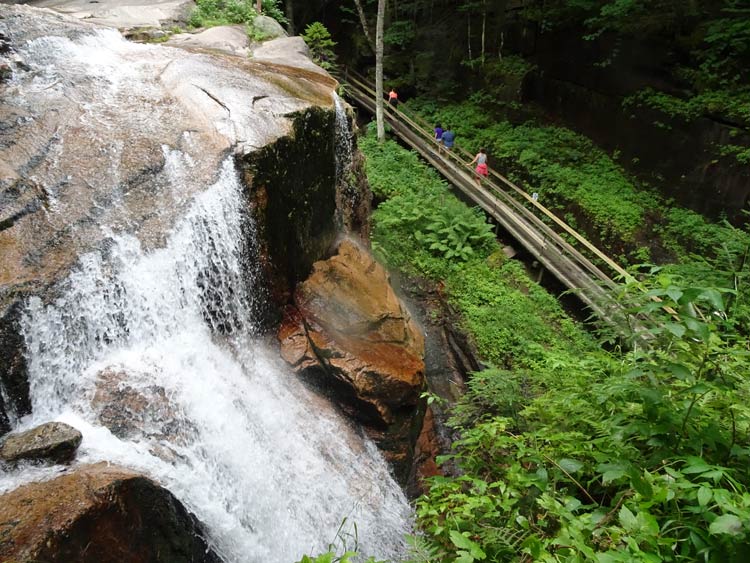

#dreamnowtravellater
Some of the tree roots in The Flume in New Hampshire are shaped like the talons of a wild falcon. Some resemble dragons. Others look like the mitts of Edward Scissorhands. Through time, they have found a way to survive by wrapping themselves around the boulders created in New Hampshire’s White Mountains some 200 million years ago.
The Flume is a gorge that slices its way through the granite that occupies much of New Hampshire, and while walking its two-mile-long-loop trail we admired the waterfalls and 90-foot high cliffs but also looked to our sides and let our imagination run wild and see all sorts of creatures and objects in the forms of gnarled, twisted tree roots.
The White Mountains of New Hampshire
There is a commercial side to the White Mountains, but most of that is in North Conway, in the region’s eastern corner. One of the most engaging independent theme parks, Storyland, is in nearby Glen. The region is also the place to go to play a round of miniature golf or hit shopping outlets. But the focus of this article is nature, the prime reason for a White Mountains journey.
Franconia Notch State Park
The Flume makes for an introspective first stop. It is part of Franconia Notch State Park, likely the best known of New Hampshire’s state parks. The views and gurgling sounds of Flume Brook keep you company as you explore the ages-old gorge. As you walk the boardwalk – expect a lot of stairs and uphill climbs – don’t neglect to notice the ferns, mosses, and other flora growing on the granite walls. You will swear you have never seen so many shades of green.
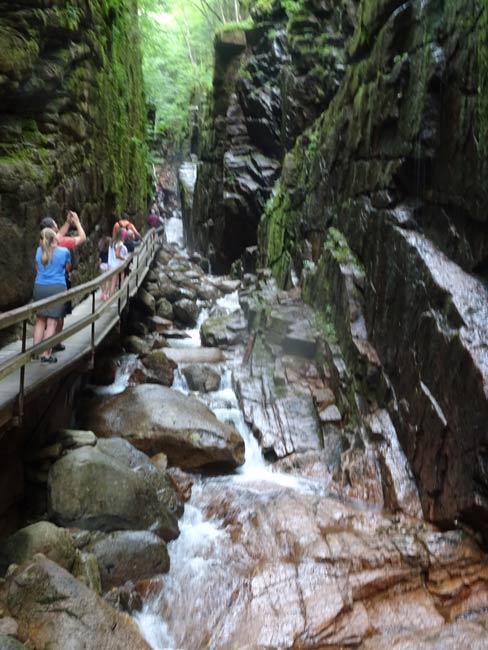
Those wanting less legwork can hop aboard a bus that takes people from the visitor center to within 500 feet of the gorge entrance. Meanwhile, the more adventurous can take a detour through the Wolf Den, a one-way path narrow as an arrow. Prepare to crawl on your hands and knees and squeeze through rocks to traverse it.
One won’t be here long before hearing about the Kancamagus Highway, officially Route 112 but known to locals as the Kanc. Off the Kanc are nearly three dozen trails, easy, moderate and difficult. The fairly flat Sabbaday Brook Trail is under a half mile long round trip and ends at Sabbaday Falls, one of the prettiest but hardly the only cascade here.
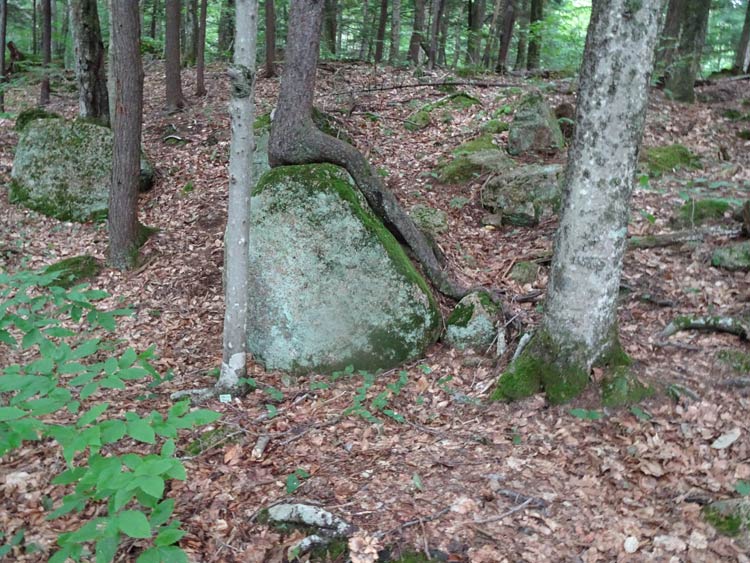
For roughly two centuries, just about every visitor to Franconia Notch made a mandatory to stop to see Old Man of the Mountain. He was probably the most famous resident of New Hampshire, with his likeness on license plates, highway markers, souvenirs (of course!), and the back of the New Hampshire state quarter.
He wasn’t human but to the people of New Hampshire he was the closest thing. The Old Man was a rock formation high up in Franconia Notch. It resembled the profile of a sharp-jawed man, and personally I always thought he looked like comic strip detective Dick Tracy.
The first recorded mention of the Old Man was in 1805. He was later immortalized by Nathaniel Hawthorne who wrote, “Men hang out their signs indicative of their respective trades; shoemakers hang out a gigantic shoe; jewelers a monster watch, and the dentist hangs out a gold tooth; but up in the Mountains of New Hampshire, God Almighty has hung out a sign to show that there He makes men.”
Some time in the early morning hours of May 3, 2003, the unthinkable happened. The Old Man had had enough and collapsed, crumbling to the ground. To the people of New Hampshire, it was like the death of a favorite son.
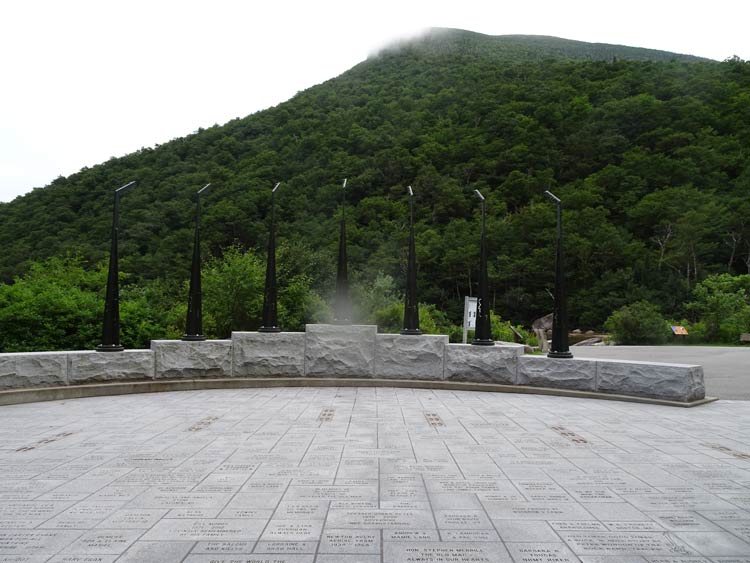
Before long, a memorial was planned. The Old Man of the Mountain Profiler Plaza opened in June 2011. There are paver stones inscribed with names of benefactors; a museum; and a sort of virtual reality view of the Old Man. Seven tall, steel rods stand here, each topped with a small sculptured image of the Old Man.
Pink granite stones are labeled with different heights. Stand on the stone closest to your height, look straight ahead, and close one eye. A profile of the Old Man will come into view. Trust me; it is not as intricate as it sounds.
Hikers have a myriad of options to reach mountaintops where they will be rewarded with stellar views looking down into the valleys. Mount Washington, at 6,288 feet, is the highest peak. Those who have driven through or climbed the Rockies or the Alps may yawn at the thought of a peak 6,288 feet above sea level. But bear in mind that the valley floor at its lowest point is just 2,031 feet above sea level, so Mount Washington rises up over 4,200 feet before you.
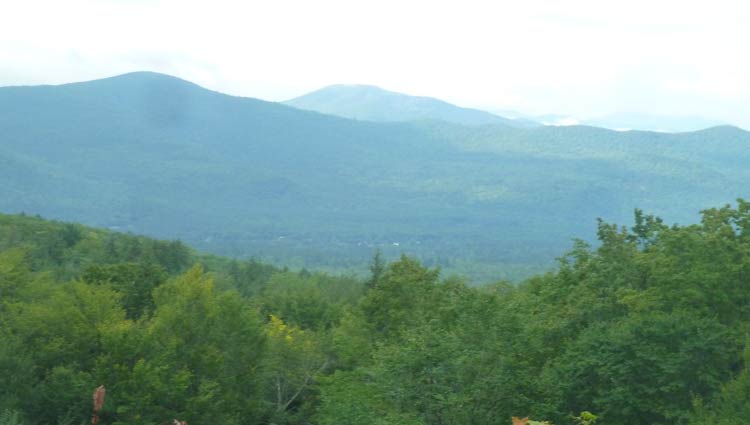
And these are different kinds of mountain one sees here. The peaks aren’t jagged like their cousins in Colorado and Switzerland. Eons ago, glaciers wore away sharp summits. The mountaintops here are rounded with smoothed granite, offering a different image of nature at its finest.
For those who don’t wish to climb, there are alternative ways to reach the top. The historic Mount Washington Auto Road and the famed Mount Washington Cog Railway are both means for visitors to get to the spot known as the top of New England, where there is a weather station, a summit house, and a small museum. At your feet are stunted brush and rocks. On the clearest days, one can see the Atlantic Ocean off the Maine Coast.
What in winter are skiers’ modes of transportation offer additional opportunities for mountaintop views. One is the gondola at Wildcat Mountain in the northeastern White Mountains.
Aerial Tramway at Cannon Mountain
We opted for the aerial tramway at Cannon Mountain. During the seven-minute ride to the 4,100-foot summit, a guide will entertain you with some fast facts and corny jokes. “We have two trams. We call the red one `Ketchup.’ We call the yellow one `Mustard. Whichever you take, you will relish the view.”
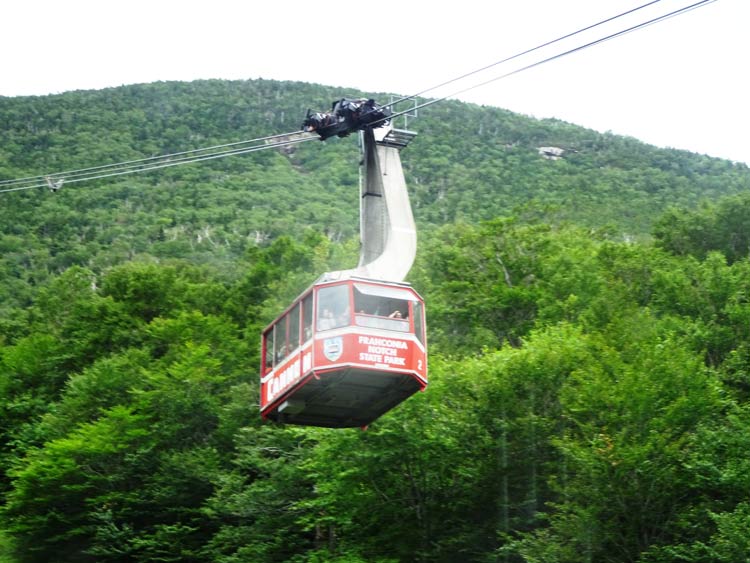
The sky was overcast when we rode the tram, so our view was hindered. But a visitor center at the top entertained us. There is a chalkboard for visitors to write where they are visiting from. On the day we visited, there were visitors from among other places, Peru, Israel, and Holland as well as Keene, N.H., Brooklyn, N.Y., and Revere, Mass.
Omni Mount Washington Hotel
Driving along Route 302 first-time visitors are often stunned by the sight of the Omni Mount Washington Hotel, a sprawling, whitewashed, wedding cake of a building that has become a highlight for visitors in its own right.
World history happened here. In 1944, with the end of World War II in sight, representatives from 44 nations gathered at the World Monetary Conference held here and made major decisions about the post-war global economy.
History aside, many travelers just want to look inside the grand resort. One of the most satisfying ways to enjoy the place is to grab a wicker seat on the South Veranda, have a drink or a sandwich, and enjoy the panorama before you.
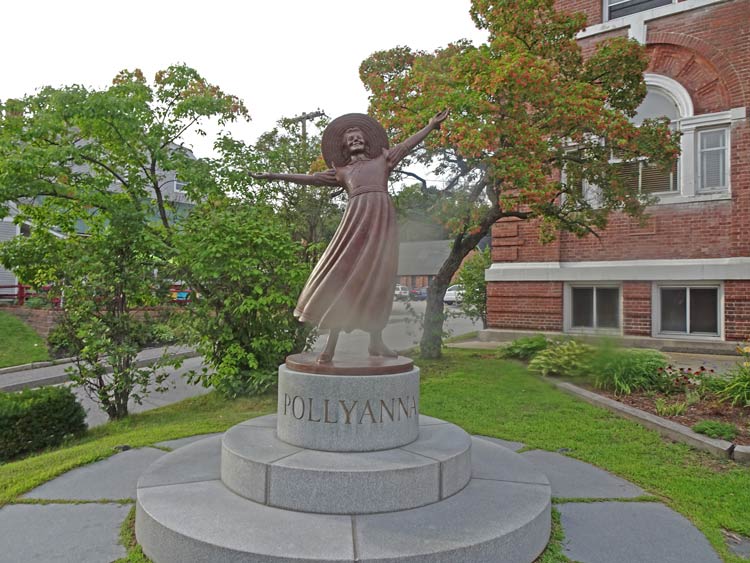
Riding the rural roads, serendipity rules and one never knows what he or she will come across. We stumbled across cozy Littleton, home to a literary legend and what is promoted as the world’s longest candy counter.
The literary legend is Pollyanna. The story of the girl who kept a glad list and whose infectious character won the hearts of the grumpiest people in town was created from the fertile mind of Littleton resident Eleanor H. Porter. A statue of Pollyanna adorns the front lawn of the town library, and her image is on everything from lamppost banners to pedestrian crosswalks.
Chutters
The candy counter is in Chutters, which sells a few souvenirs but is mostly stocked with sweets, some of which baby boomers haven’t seen since they were kids. In 2000, the Guinness Book of World Records declared the Chutters candy counter the world’s longest.
Is it still the world’s longest? Who knows? Regardless, a tape measure attached to the counter under the parade of candy jars proves that it reaches a fraction shy of 112 feet long.
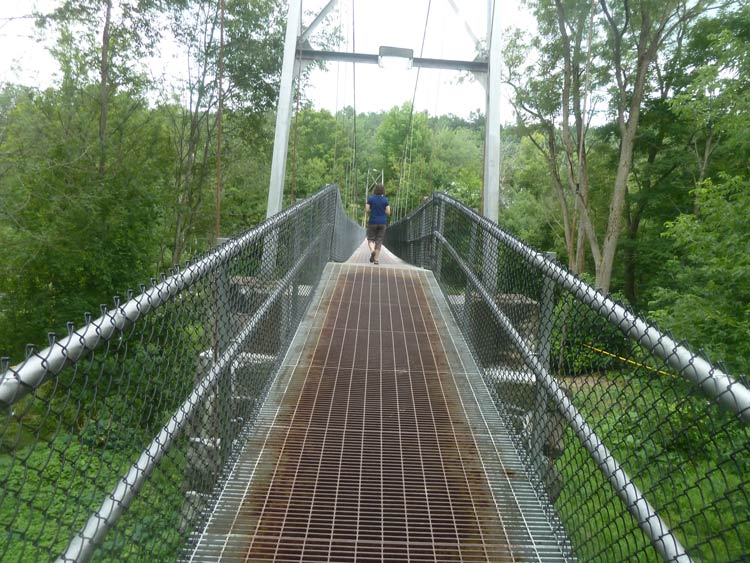
There is a treat for adventurists in Littleton, too. The Curran Suspension Bridge is a narrow, pedestrian-only span a total 244 feet long; and if you stop and look down, you can see through the bridge’s metal slats the Ammonoosuc River gushing over rocks below.
This is the third such bridge here since 1902. Its original purpose was to connect the residential and industrial parts of Littleton. Today people walk it for the experience, but expect to feel it sway a bit as you approach the other side. Is it fun or nerve-wracking? That all depends on what you define as fun.
If You Go
White Mountains Attractions Association, (800-346-3687, 603-745-8720), VisitWhiteMountains.com
Read more on New Hampshire in Roadtrip through New England
